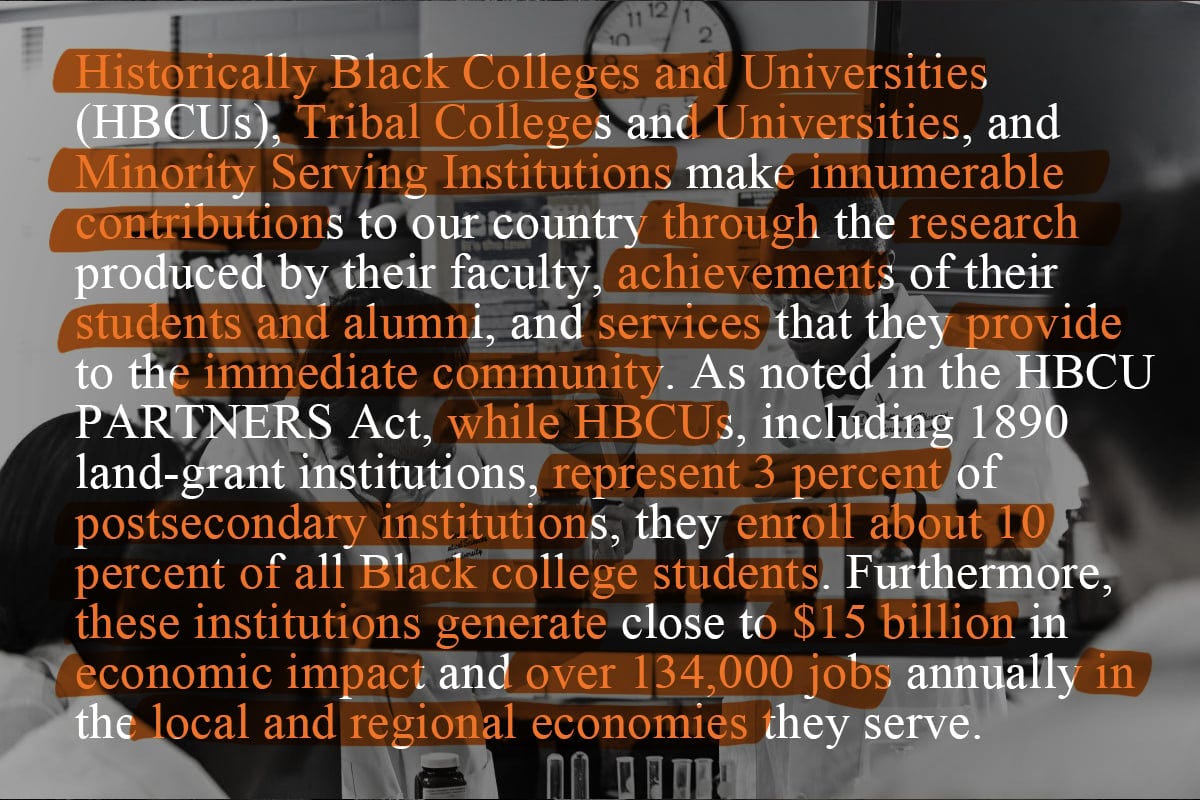Inside Higher Ed: States Underfunded Historically Black Land Grants by $13 Billion Over 3 Decades
From Inside Higher Ed …
After years of efforts by advocates to draw attention to the historic underfunding of historically Black land-grant colleges and universities, the federal government issued its own call to action this week, urging the governors of 16 states to address the inequities.
Education Secretary Miguel Cardona and Agriculture Secretary Tom Vilsack sent joint letters to each state’s governor, highlighting just how much the Black land grants in their state are owed.
Over all, 16 of the country’s 19 historically Black land-grant universities have been underfunded by their states by a total of $13 billion, according to the federal analysis of per-student state spending data from 1987 to 2020. Only two states, Ohio and Delaware, were found to have equitably funded their HBCU land grants. The other states’ institutions had funding gaps between $172 million to $2.14 billion compared with their predominantly white counterparts.
Experts and advocates say the Biden administration’s analysis, and its appeals to governors, are welcome steps that elevate a long-standing issue for historically Black land-grant universities, which, under federal law, are supposed to receive equitable funding compared to their predominantly white land-grant peers. Although the letters don’t have much in the way of teeth beyond naming and shaming, advocates are hopeful that this step signals that the federal government will be focusing on the issue and pursuing solutions. The Education Department did not respond to a request for comment about its next steps.
Mortimer Neufville, president of the 1890 Universities Foundation, a nonprofit focused on supporting its namesake institutions, said in a statement to Inside Higher Ed that the data confirm “beyond question the historic underfunding of state matching funds” for some of the Black land grants.
He added that he hoped the data and direct appeal to governors will push them to act and equitably fund the 1890 institutions. “I also stress the need to treat the one-to-one match as a floor, not a ceiling for ongoing funding, as many PWI [predominantly white] land grants receive higher than the one-to-one match funding,” he said.




